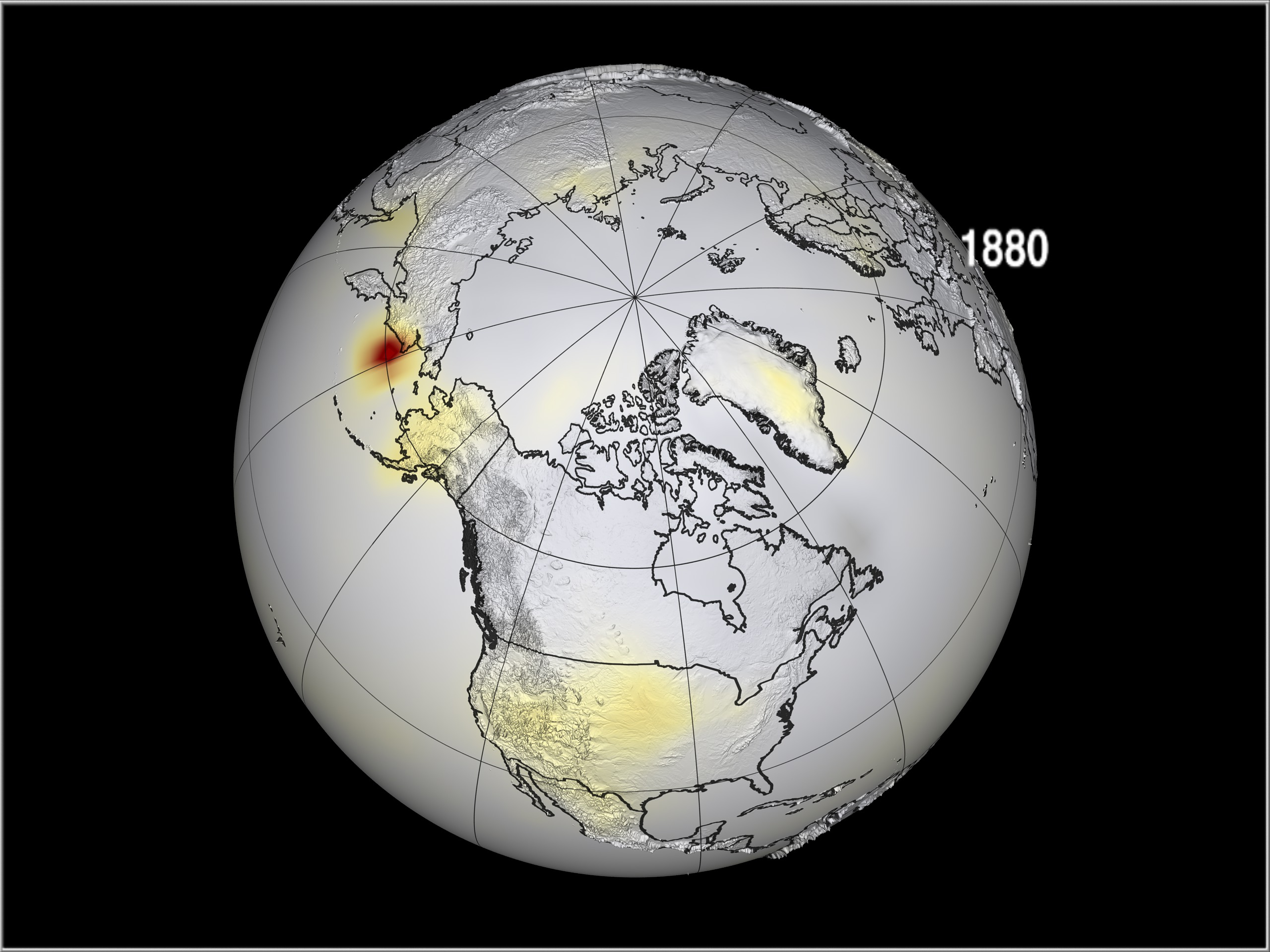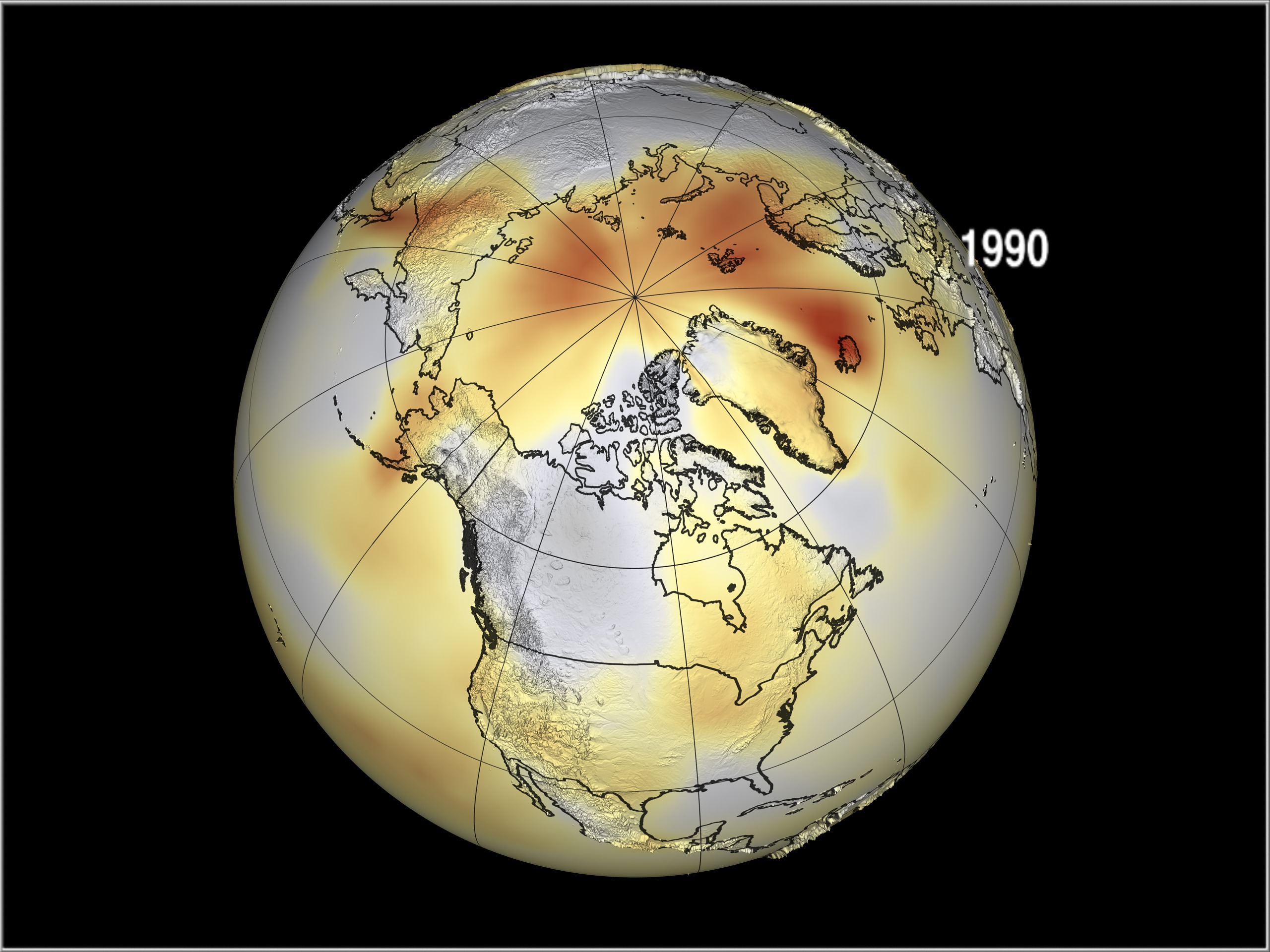Earth
ID: 3340
In the first global assessment of the impact of ozone on climate warming, scientists at the NASA Goddard Institute for Space Studies (GISS), New York, evaluated how ozone in the lowest part of the atmosphere (the troposphere) changed temperatures over the past 100 years. Using the best available estimates of global emissions of gases that create ozone, the GISS computer model study reveals how much this single air pollutant and greenhouse gas has contributed to warming in specific regions of the world.
Ozone was responsible for one-third to half of the observed warming trend in the Arctic during winter and spring, according to the new research. Ozone is transported from the industrialized countries in the Northern Hemisphere to the Arctic quite efficiently during these seasons. The findings will be published soon in the American Geophysical Union's Journal of Geophysical Research-Atmospheres.
The impact of ozone air pollution on climate warming is difficult to pinpoint because, unlike other greenhouse gases such as carbon dioxide, ozone does not last long enough in the lower atmosphere to spread uniformly around the globe. Its warming impact is much more closely tied to the region it originated from. To capture this complex picture, the GISS scientists used a suite of three-dimensional computer models that starts with data on ozone sources and then tracks how ozone chemically evolved and moved around the world over the past century.
The research was supported by NASA's Atmospheric Chemistry Modeling and Analysis Program.




Tropospheric Ozone Impacts Global Climate Warming - Arctic Dissolve
Ozone was responsible for one-third to half of the observed warming trend in the Arctic during winter and spring, according to the new research. Ozone is transported from the industrialized countries in the Northern Hemisphere to the Arctic quite efficiently during these seasons. The findings will be published soon in the American Geophysical Union's Journal of Geophysical Research-Atmospheres.
The impact of ozone air pollution on climate warming is difficult to pinpoint because, unlike other greenhouse gases such as carbon dioxide, ozone does not last long enough in the lower atmosphere to spread uniformly around the globe. Its warming impact is much more closely tied to the region it originated from. To capture this complex picture, the GISS scientists used a suite of three-dimensional computer models that starts with data on ozone sources and then tracks how ozone chemically evolved and moved around the world over the past century.
The research was supported by NASA's Atmospheric Chemistry Modeling and Analysis Program.




Visualization Credits
Lori Perkins (NASA/GSFC): Lead Animator
Drew Shindell (NASA/GSFC GISS): Scientist
Steve Cole (SSAI): Writer
Drew Shindell (NASA/GSFC GISS): Scientist
Steve Cole (SSAI): Writer
Please give credit for this item to:
NASA/Goddard Space Flight Center Scientific Visualization Studio
NASA/Goddard Space Flight Center Scientific Visualization Studio
Short URL to share this page:
https://svs.gsfc.nasa.gov/3340
Data Used:
Note: While we identify the data sets used in these visualizations, we do not store any further details nor the data sets themselves on our site.
Dates of Data Used:
December through May for years 1880, 1950, and 1990
This item is part of this series:
Troprospheric Ozone Impact on Climate Warming
Keywords:
GCMD >> Earth Science >> Climate Indicators >> Air Temperature Indices
GCMD >> Earth Science >> Atmosphere >> Atmospheric Chemistry/Oxygen Compounds >> Ozone
NASA Science >> Earth
GCMD keywords can be found on the Internet with the following citation: Olsen, L.M., G. Major, K. Shein, J. Scialdone, S. Ritz, T. Stevens, M. Morahan, A. Aleman, R. Vogel, S. Leicester, H. Weir, M. Meaux, S. Grebas, C.Solomon, M. Holland, T. Northcutt, R. A. Restrepo, R. Bilodeau, 2013. NASA/Global Change Master Directory (GCMD) Earth Science Keywords. Version 8.0.0.0.0
https://svs.gsfc.nasa.gov/3340
Data Used:
Anomalous Temperature Data
NASA's Atmospheric Chemistry Modeling and Analysis Program - December through May for years 1880, 1950, and 1990Dates of Data Used:
December through May for years 1880, 1950, and 1990
This item is part of this series:
Troprospheric Ozone Impact on Climate Warming
Keywords:
GCMD >> Earth Science >> Climate Indicators >> Air Temperature Indices
GCMD >> Earth Science >> Atmosphere >> Atmospheric Chemistry/Oxygen Compounds >> Ozone
NASA Science >> Earth
GCMD keywords can be found on the Internet with the following citation: Olsen, L.M., G. Major, K. Shein, J. Scialdone, S. Ritz, T. Stevens, M. Morahan, A. Aleman, R. Vogel, S. Leicester, H. Weir, M. Meaux, S. Grebas, C.Solomon, M. Holland, T. Northcutt, R. A. Restrepo, R. Bilodeau, 2013. NASA/Global Change Master Directory (GCMD) Earth Science Keywords. Version 8.0.0.0.0











